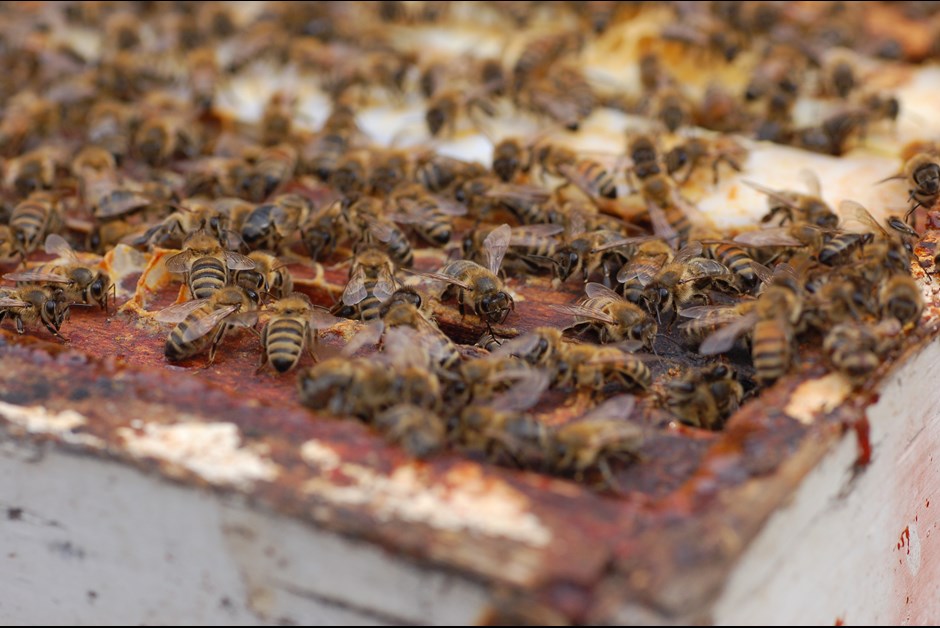The career path of a worker bee! (The Buzz on Bees with Bee Butler Michael King)
Learn more about Fairmont Waterfront or make a booking.
A worker bee will live on average about 45 days or as little as 6 weeks during the height of summer when they are working even harder to provide for the colony and in that time they will change careers several times, rather like the average human during their lifetime.
Here’s what that career path looks like:
When a worker is born it has a supply of a special substance called royal jelly that is produced for the first 2 weeks or so of it’s life before the glands in it’s head that produce it, run dry. Therefore for the first 2 weeks it is a nurse bee and feeds each new larva a diet of royal jelly that it deposits in the entrance to the cell for the first 3 days of that larva’s life.
When this supply has run out it begins the work of building wax comb using a wax supply secreted from glands on its abdomen. It will produce wax up to it’s 17th day of life on average.
After its wax supply has run it’s course it begins to assist in storing and packing pollen and nectar brought in by foraging worker bees who will regurgitate it before flying out of the hive again on their quest for more food. They will feed the pollen to the growing bee larva until those larva turn into a pupae.
Next up in the career curve is being a nurse bee feeding the larva in the brood frames and the male drones who are not capable of feeding themselves until much later in their life if ever!
It may become a queen attendant bee feeding the queen and tending and cleaning her as necessary (rather like a butler does).
Another role is a guard bee designated to protect the hive at the entrance by repelling any potential predators or trespassers that are not welcome and if that means sacrificing their life then that may be what happens.
Next job may be taking wax from other wax producing workers and using it to build up other cells.
They may become mortuary bees carrying any dead bees out of the hive that may have passed away inside the colony. Dying in the hive is something that does not happen very often as each bee recognizes the strain that places on the colony and very often simply leaves the hive to find a place to quietly pass into the bee afterlife.
At around the 22 day mark they are ready for the outside world having fulfilled their obligations to the colony inside “the house" !
Once the bee leaves the hive to become a foraging bee it may travel as far as 5 kilometers from the hive in it’s search for food although that will depend on where it finds a good food source which may be closer than that .
The work of being a foraging bee is the final career move the bee will make and she will journey out of the hive from sun-up to sun-down in her search for pollen and nectar for the colony she is committed to serving from day 1 to her final day on earth.
As you can see the worker bee's career moves follow its natural abilities to provide certain skills as it develops through its life stages and as one set of ‘skills’ develop it uses them and moves through its life giving the best of what is has to offer to the colony it was born into. It remains a selfless contributor that asks for nothing and gives its all for the lives of its mother, its brothers and its sisters.
Learn more about our bees and #BeeButler at: http://bit.ly/greenhotelinitiatives
